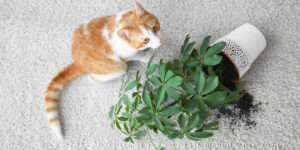
Companion Plants for Strawberries
Companion planting is an age-old gardening technique that involves growing different plants in proximity for mutual benefits. This practice can enhance growth, deter pests, and improve the overall health of plants. Strawberries, a popular and delicious fruit, can greatly benefit from companion planting. This article will explore the best companion plants for strawberries, their benefits, and how to effectively incorporate them into your garden.
Benefits of Companion Planting with Strawberries
- Pest Control: Certain companion plants can repel pests that commonly affect strawberries, such as aphids, slugs, and spider mites.
- Improved Pollination: Some flowers attract pollinators, which can enhance the fruiting process of strawberries.
- Soil Health: Companion plants can improve soil fertility by fixing nitrogen or adding organic matter, benefiting strawberry plants.
- Space Utilization: Growing companion plants can maximize garden space, allowing for a more diverse and productive garden.
- Flavor Enhancement: Some companion plants are believed to improve the flavor of strawberries.
Ideal Companion Plants for Strawberries
1. Herbs
Herbs are excellent companions for strawberries due to their pest-repelling properties and ability to attract beneficial insects.
- Borage: Known for attracting pollinators and beneficial insects, borage also adds trace minerals to the soil, potentially enhancing strawberry flavor.
- Thyme: This herb attracts pollinators and can deter pests like aphids. Its low growth habit helps keep the soil cool and moist.
- Chives: The strong scent of chives can repel pests such as aphids and slugs. They also attract pollinators when allowed to flower.
- Mint: While mint can spread aggressively, it repels ants and beetles. It should be planted in containers or with root barriers to control its growth.
2. Vegetables
Certain vegetables can coexist with strawberries without competing for resources.
- Lettuce: This low-growing plant can be planted between strawberry rows, providing shade and helping to suppress weeds.
- Spinach: Similar to lettuce, spinach grows well alongside strawberries and can help deter pests due to its saponin content.
- Asparagus: Both strawberries and asparagus have different root systems, allowing them to coexist without competition for nutrients.
- Garlic: Known for its pest-repelling properties, garlic can help deter pests that might harm strawberries.
3. Flowers
Flowers not only beautify the garden but also provide ecological benefits.
- Marigolds: These flowers are renowned for their ability to repel nematodes and other pests.
- Nasturtiums: They attract aphids away from strawberries, serving as a trap crop.
- Lavender: This aromatic flower can deter pests and attract pollinators, benefiting strawberry plants.
- Yarrow: Known for attracting beneficial insects, yarrow can improve soil health and deter pests.
Plants to Avoid Near Strawberries
Not all plants are suitable companions for strawberries. Some can hinder their growth or increase the risk of disease.
- Brassicas: Plants like cabbage, broccoli, and cauliflower compete for nutrients and can harbor pests that affect strawberries.
- Nightshades: Tomatoes, potatoes, and eggplants can spread diseases like verticillium wilt, which strawberries are susceptible to.
- Fennel: This herb can inhibit the growth of strawberries and should be kept at a distance.
How to Implement Companion Planting
- Plan Your Garden Layout: Before planting, consider the growth habits and space requirements of both strawberries and their companions.
- Planting Time: Timing is crucial. Some companion plants can be sown alongside strawberries at planting time, while others may be added later.
- Monitor Growth: Keep an eye on the growth of both strawberries and companion plants to ensure they are thriving together.
- Adjust as Needed: If certain plants are not thriving or if pests appear, be prepared to adjust your planting strategy.
Conclusion
Companion planting is a valuable technique that can enhance the growth and health of strawberry plants. By selecting the right companions—herbs, vegetables, and flowers—gardeners can create a more productive and resilient garden. Understanding which plants work well together and which should be avoided is essential for maximizing the benefits of companion planting.
FAQ
- What are the best companion plants for strawberries?
- Some of the best companions include borage, thyme, chives, lettuce, spinach, and marigolds.
- Can I plant tomatoes near strawberries?
- It is not recommended to plant tomatoes near strawberries as they can spread diseases like verticillium wilt.
- How do companion plants help strawberries?
- Companion plants can repel pests, attract pollinators, improve soil health, and maximize garden space.
- Are there any herbs that should not be planted with strawberries?
- Yes, fennel is known to inhibit the growth of strawberries and should be avoided.
- How can I maximize space in my strawberry garden?
- Planting low-growing vegetables like lettuce and spinach alongside strawberries can help utilize space effectively.
Companion Planting Table
| Companion Plant | Type | Benefits | Wikipedia/Gov Link |
|---|---|---|---|
| Borage | Herb | Attracts pollinators, improves flavor | Borage |
| Thyme | Herb | Deters pests, attracts beneficial insects | Thyme |
| Chives | Herb | Repels aphids, attracts pollinators | Chives |
| Lettuce | Vegetable | Maximizes space, suppresses weeds | Lettuce |
| Spinach | Vegetable | Deters pests, maximizes space | Spinach |
| Marigolds | Flower | Repels nematodes, attracts pollinators | Marigold |
| Nasturtiums | Flower | Attracts aphids away from strawberries | Nasturtium |
By understanding and implementing companion planting strategies, gardeners can cultivate healthier and more productive strawberry plants, enhancing both their yield and flavor.


